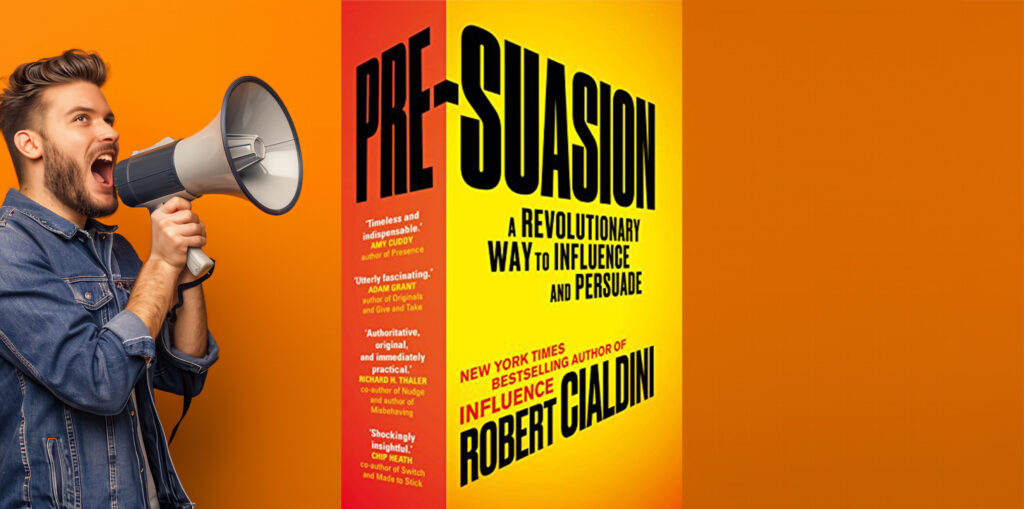Whilst I have a few misgivings about using Generative AI in creating marketing content, businesses will use it. It saves time and money and looks pretty good on first impressions. My misgivings remain about what effect it will have on marketers starting out on their careers; see previous article. There are still persisting noises about Google penalising websites that overuse it. Lastly, it is already becoming like stock photography. There are clear markers in the content that gives it away, which lacks authenticity.
So, if you are going to use it, we thought we should offer some tips to ensure the outputs will work in your favour rather than have similar effects to stock photography in many cases, i.e., looks ok, but something doesn’t feel right.
- Prompt it with a storyline.
- Use multiple tools.
- Apply the “Would/Should you say that” tests.
Storyline Prompts
There is a common thread to compelling content writing. Content that tells a story is often more compelling than straight-up opinion-giving or fact-scribing. It is important to remember this when using generative AI. So instead of simply asking it to, for example, “write a blog post about the benefits of ethically sourced materials in clothing production”, use a storyline.
I considered using the StoryBrand framework, which can be found here. Most movie plots, novels, and songs adhere to this structure, so why shouldn’t compelling marketing content? Here’s how it unfolds:
1. Your customers are the lead character (think Luke Skywalker).
2. Their problem is the villain, representing a product or service need.
3. They encounter a guide, which is your business.
4. This guide presents them with a plan, showcasing your product or service, and provides the reasons and means to access it.
5. The guide then calls them to action, prompting them to buy or inquire.
6. Along the way, they’re helped to avoid pitfalls, such as missing out or continuing with their initial problem.
7. Ultimately, the customer completes their transformation journey, emerging as a hero. Psychological and physical benefits from your product or service highlight this transformation.
If you want to keep up with the jargon, we are about to embark on some prompt engineering. Let’s compare two prompts and their output. We are using ChatGPT-4, and I’m leaving in American English spelling to make another point. The first prompt is a task request, while the second prompt sets a scene. Let’s look at the prompts and the key differences in their outputs.
- “Write a compelling blog post about the benefits of the ethical sourcing of materials in our product HyperJeans on reducing the impacts of fast fashion on the environment.” Click here to view the output: https://chat.openai.com/share/93b508e2-dc17-487c-95b7-35008fdc2606
- “Our company is called HyperJeans. Our customers want ethically sourced materials in the clothing they buy, and they feel it is important to reduce the impact of fast fashion. We manufacture and sell high-quality and long-lasting clothing made from materials free from human slavery and the use of plastics. We offer our products on our website and want to educate consumers about them. You are an expert in the benefits of ethically sourced supply chains. Write a blog post that talks about the features and benefits of our products that compels a customer to buy our goods and contribute to the reduction of the negative impacts of fast fashion.” Click here to view the output: https://chat.openai.com/share/7839a46f-21d3-496d-b124-a2d42ac4ab2d
What do you notice?
Output 1 is very matter-of-fact. I’m not saying it is factual, and it would need fact-checking. Indeed, it says that our product has a percentage decrease in water usage. Does it?
Output 1 does position the product with the benefits of using ethically sourced materials and does address how this reduces the negative impacts of fast fashion. This is what we asked it to do.
BUT
Output 2 immediately addresses the customer and their psychological needs, so from the outset, we are talking to the customer’s need, not the general product benefit.
Output 2 expresses company values while detailing the product benefits and then positions these benefits as a psychological gain to the customer.
Output 2 ends with a call to action and sets the scene of a movement. The concluding paragraphs are quite good, if a little hyperbolic.
“HyperJeans isn’t just another fashion brand; it’s a revolution. By merging quality, ethics, and longevity, we present a sustainable model that challenges the fast fashion industry’s status quo.
By choosing HyperJeans, you’re not just buying a garment; you’re investing in a vision. A vision of a world where fashion is kind to the earth, respectful of its workers, and worthy of its wearers.
So, the next time you’re on the hunt for that perfect pair of jeans, remember: with HyperJeans, you’re not just wearing a product; you’re wearing a promise. A promise of quality, ethics, and a brighter future for all.”
Wow. Which output do you think is more likely to encourage readers to buy the product?
Which brings me to my next two tips
Use multiple tools
Using a second or third generative AI application with similar prompts, perhaps adding more tone of voice, e.g. I neglected more demographic detail in my original prompts, so I could add that the customer is female, aged between 18-35, for example. Then compare the outputs. You will find the structure is similar, the key points mostly align, but there may be another one you can include. Because the structure is similar, comparing the two outputs forces you to read them and comprehend the content before putting together the final content. It also allows you to put the next tip into action.
Apply the “Would/Should you say that” tests.
Read the content in your own voice and the voice of your company. Generative AI can be quite over the top with adjectives, so make sure they actually match what is being described. Is it actually “ground-breaking” or “revolutionary”? Would your or your company’s voice say that? Also, the general language, would your brand say “would suffice” or “will do”? Remember, the more generative AI is used, text, video, and images, the more important authenticity will become in standing out and touching your target market.
A second part of this is to apply the “should you say that” test. I’ll include spelling in this, and you must ensure your content doesn’t include American spelling in the output. You could ask it to rewrite or write in Australian English and tone of voice, but you might end up with something practically useless.
“Fair Dinkum Fashion: HyperJeans, the True Blue Aussie Choice
G’day mate! In today’s world of fly-by-night fashion, many of us Aussies are cottoning on to the environmental, ethical, and societal blowback from our clothing choices. With tucker bags full of tossed-out togs and hard yakka for many workers, the fashion industry needs a good shake-up. And who better to do it than our own HyperJeans?”
Applying the “should you say that” test forces you to read the content critically to remove anything that is factually dubious, that potentially leaves you open to liability or criticism, and in the case of content such as used in this example, if you do not walk the talk generated by the AI, you can expect to be the subject of consumer-driven criticism, potentially on a large scale.
So, now using generative AI isn’t that much of a time saver after all. There is a craft backed by knowledge in using it to its best potential for a company, not only in marketing but anywhere content is used from a company perspective. Marketers understand consumer psychology, and product and service subject matter experts know their subject. It is important that both play a role in content creation. Generative AI plays the role of the intern, a pretty good one that gets better as it learns but still is only able to provide the starting point.




